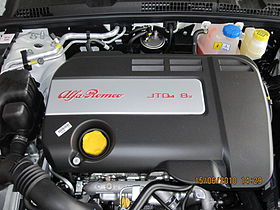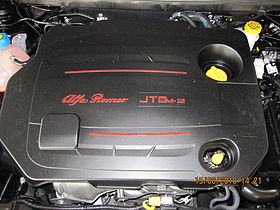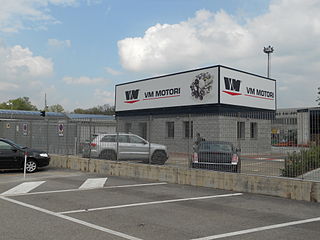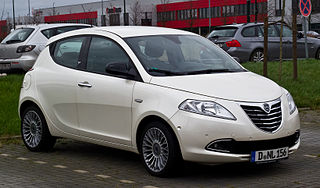Automotive engines
1.0
| 1.0 L | |
|---|---|
| Overview | |
| Manufacturer | General Motors |
| Also called |
|
| Production | 2011–2017 |
| Layout | |
| Configuration | Inline-3 |
| Displacement | 936 cc (57.1 cu in) |
| Cylinder bore | 69.615 mm (2.74 in) |
| Piston stroke | 82.0 mm (3.23 in) |
| Valvetrain | DOHC with roller finger followers |
| Compression ratio | 16.8:1 |
| Combustion | |
| Fuel system | Common rail |
| Output | |
| Power output | 57 bhp (43 kW; 58 PS) |
| Torque output | 150 N⋅m (111 lb⋅ft) |
| Dimensions | |
| Length | 553.3 mm (21.78 in) |
| Width | 547.3 mm (21.55 in) |
| Height | 700.5 mm (27.58 in) |
| Dry weight | 130 kg (287 lb) |
A 0.9 L (936 cc) 3-cylinder variant, (called XSDE, Xtra Smart Diesel Engine) or Smartech Diesel, was introduced in 2011. Co-developed by GM Powertrain Torino and the GM Technical Center India for the Indian market the engine is rated at 57 bhp (43 kW; 57 hp) of power and 150 N⋅m (111 lb⋅ft) of torque. [3]
Applications:
- 2011–2017 Chevrolet Beat (India)
1.3 Multijet
| 1.3 L | |
|---|---|
| Overview | |
| Manufacturer | Fiat Auto (2003-2005) Fiat Powertrain Technologies (2005-2011) Fiat Group Automobiles (2011-2014) FCA Italy (2014-present) General Motors Maruti Suzuki Tata Motors |
| Also called | |
| Production | 2003–2024 |
| Layout | |
| Configuration | Inline-4 |
| Displacement | 1,248 cc (76.2 cu in) |
| Cylinder bore | 69.6 mm (2.74 in) |
| Piston stroke | 82.0 mm (3.23 in) |
| Valvetrain | DOHC |
| Compression ratio | 17.6:1 |
| Dimensions | |
| Dry weight | 140 kg (310 lb) |
A small 1.3 L (1,248 cc (76.2 cu in)) version (called the SDE, Small Diesel Engine) introduced in February 2003 [4] is produced in Bielsko-Biała, Poland, [5] in Ranjangaon, Pune, India, by Fiat India Automobiles and Tata Motors joint venture plant since 2008, [6] and by Maruti Suzuki in Gurgaon, Haryana, India since 2012. [7] [8] The Multijet 75 PS version was chosen in 2005 as the International Engine of the Year in the 1-litre to 1.4-litre category.
There are five versions of this engine: a 70 PS (51 kW; 69 hp), a 75 PS (55 kW; 74 hp) (used in the Fiat Punto, Panda, Palio, Albea, Idea, 500; Opel Corsa, Combo, Meriva; Suzuki Ritz, Swift; and Tata Indica Vista), a variable inlet geometry 90 PS (66 kW; 89 hp) (used in the Fiat Grande Punto, [9] Linea; Opel Corsa, Astra; Suzuki Ertiga, SX4; Tata Indigo Manza and Alfa Romeo MiTo), a 95 PS (70 kW; 94 hp) from the Multijet II generation, [10] and a 105 PS (77 kW; 104 hp) available on the Lancia Ypsilon. At the time of the launch this was the smallest four-cylinder diesel engine available and had a fuel consumption of 3.3 L/100 km (86 mpg‑imp; 71 mpg‑US) in some applications. The engine is able to meet Euro IV pollution standards without the use of a diesel particulate filter. [10]
In January 2008, Tata Motors introduced the new Indica Vista model, which features new Quadrajet branded version of this engine. [11] The second generation Ford Ka uses 1.3 Multijet named as Duratorq TDCi. In GM nomenclature, it is called Small Diesel Engine (SDE).
During 2009, Fiat launched a new generation badged Multijet II, with a new injection management system (up to 8 injections per cycle, instead of 5) and able to meet Euro V pollution standards. [12] It is available with several power outputs, from 75 PS (55 kW; 74 hp), with fixed geometry turbocharger, to 95 PS (70 kW; 94 hp), with variable geometry turbocharger. [13]
As of 2013, more than 5 million 1.3 MultiJet engines were produced. [14] In January 2020, the production of the 1.3 Multijet ended in India in both Maruti Suzuki plant and Fiat-Tata JV as the BS6 emission regulations come into effect in the country from 1 April 2020. [15] Fiat-Tata built a total of 800,048 engines over 12 years. [16]
Applications:
FCA
General Motors
- Chevrolet Aveo (2012)
- Chevrolet Sail (India)
- Chevrolet Spin (Indonesia)
- Opel Agila
- Opel Astra
- Opel Combo
- Opel Corsa
- Opel Meriva
- Opel Tigra TwinTop
PSA
Suzuki
Tata Motors
Others
- DFSK Super Cab (Indonesia)
- Ford Ka (2008)
- Premier Rio
1.5 Multijet
1.6 Multijet
| 1.6 L | |
|---|---|
| Overview | |
| Also called | Multijet (Fiat) D16A DDiS (Suzuki) |
| Production | 2006–present |
| Layout | |
| Configuration | Inline-4 |
| Displacement | 1,598 cc (97.5 cu in) |
| Cylinder bore | 79.5 mm (3.13 in) |
| Piston stroke | 80.5 mm (3.17 in) |
In 2006, Fiat Powertrain announced a downsized version of the 1.9 16V Multijet, a new 1.6L 16V Multijet (1,598 cc) with two power levels of 105 PS (77 kW; 104 hp) and 120 PS (88 kW; 120 hp) to replace the still-used 1.9L 8-valve engine. The new 1.6 Multijet diesel with 105 PS was released in December 2007, the 120 PS version arrived later in 2008. [17]
Applications:
FCA
General Motors
Suzuki
- Suzuki Vitara (2015)
- Suzuki SX4 S-Cross (from 2013 [18] )
1.9
| 1.9 L | |
|---|---|
 JTDm engine cover of Alfa Romeo 159 | |
| Overview | |
| Manufacturer | Fiat/GM |
| Also called |
|
| Production | 1997–present |
| Layout | |
| Configuration | Inline-4 |
| Displacement | 1,910 cc (117 cu in) |
| Cylinder bore | 82 mm (3.2 in) |
| Piston stroke | 90.4 mm (3.56 in) |
| Compression ratio | 18.5 |
| Combustion | |
| Turbocharger | Some versions |
| Dimensions | |
| Dry weight | 125 kg (276 lb) (Single turbo) |
The most common JTD engine is the 1.9 L straight-4 found on various brands and models. The first car that used this engine was Alfa Romeo 156 in 1997 (105 PS, 77 kW, 104 hp), making it the world's first common-rail diesel passenger car. In 1999, it was introduced on the Fiat Punto JTD with a smaller, fixed-geometry turbocharger and 80 PS (59 kW; 79 hp), as well as in the Fiat Brava, Bravo and Marea range. There were also 85 PS (63 kW; 84 hp), 101 PS (74 kW; 100 hp), 105 PS (77 kW; 104 hp), 110 PS (81 kW; 110 hp), and 115 PS (85 kW; 113 hp) versions available. The engine block weighs approximately 125 kg (276 lb), the cylinder head features an overhead camshaft with directly actuated valves.
The Multijet second generation features an advanced common-rail system and is available with seven different power outputs. The 8-valve version has 101 PS (74 kW; 100 hp), 120 PS (88 kW; 120 hp), or 130 PS (96 kW; 130 hp) and the 16-valve version has 134 PS (99 kW; 132 hp), 138 PS (101 kW; 136 hp), 150 PS (110 kW; 150 hp), or 170 PS (130 kW; 170 hp). Except for the 101 PS Multijet, all engines feature a variable-geometry turbocharger.
Opel also uses a version of this engine. Their CDTI engine, manufactured in Pratola Serra, Italy and Kaiserslautern, Germany, is the product of the half-decade joint venture between GM and Fiat. It is used in the Vectra, Signum, Astra, Zafira, Cadillac BLS and Suzuki SX4 as well as some Saabs marked as TiD and TTiD (twinturbo version).
Applications
FCA
General Motors
Suzuki
Others
SAIC Motor
Gallery
- Right side view, from Saab 9-5
- Left side view, from Saab 9-5
- Dual overhead camshaft housing
- Turbo charger with attachments from 9-5
Twin Turbo

Fiat Powertrain Technologies released information about new two stage turbo (twin turbo) version of this engine in summer 2007, engine is available with two power levels, first one is producing 180 PS (130 kW; 180 hp) and second one 190 PS (140 kW; 190 hp), both have a maximum torque output of 400 N⋅m (300 lb⋅ft) at 2000 rpm. 180 PS version production started summer 2007. The engine weighs approximately 185 kg (408 lb). This engine will be sold both to Fiat Group Automobiles and other brands, but the 190 PS (140 kW; 190 hp) version is reserved only to Fiat Group Automobiles. [19]
Applications:
2.0 Multijet II
| 2.0 L | |
|---|---|
 JTDm 2 engine cover of Alfa Romeo Giulietta | |
| Overview | |
| Manufacturer | |
| Also called | |
| Production | 2008–present |
| Layout | |
| Configuration | Inline-4 |
| Displacement | 1,956 cc (119.4 cu in) |
| Cylinder bore | 83 mm (3.3 in) |
| Piston stroke | 90.4 mm (3.56 in) |
| Cylinder block material | Cast iron |
| Cylinder head material | Aluminum |
| Valvetrain | Dual overhead camshafts |
| Compression ratio | 16.5 |
| Combustion | |
| Fuel system | Direct injection |
| Fuel type | |
| Oil system | Wet sump |
| Cooling system | Water-cooled |
| Output | |
| Power output | 110–192 hp (82–143 kW) |
| Torque output | 192–280 lb⋅ft (260–380 N⋅m) |
| Dimensions | |
| Dry weight | 174–182 kg (384–401 lb) |
A new 2 litre (1,956 cc, 83 mm bore, 90.4 mm stroke) Multijet diesel was introduced in third generation Lancia Delta in summer 2008. At its first version this engine produces 165 PS (121 kW; 163 hp). For 2009 the engine was fitted to Alfa Romeo 159 as 170 PS (125 kW; 168 hp) variant. Fiat Sedici, Suzuki SX4 and the new Fiat Doblò generation use a 135 PS (99 kW; 133 hp) variant of this engine.
GM Powertrain separately developed their diesel engines based on 1.9 JTD, after end of the GM and Fiat partnership, [20] and first was the 160 PS (120 kW; 160 hp) version for Astra and Insignia, which was later upgraded to 165 PS for Astra (163 PS in restyled version of Insignia), and less powerful version for Insignia with 110 PS and 130 PS. In 2011 GM Powertrain Europe developed a new derivative - the twin-turbocharger BiTurbo version, with 195 PS (143 kW; 192 hp), which is used in the Insignia and starting with 2013 in the Astra J. Internally the new engine is referred to as GM Ecotec Family B engine. The same engine was also available in the 2011 Saab 9–5 with 160 PS and 190 PS twin-turbo. In 2013 Opel introduced cleaner and more fuel efficient versions of the 2.0 CDTI engine and the ecoFLEX version, with 99 g/km of CO2 and 120 PS (140 PS for Insignia). [21]
Applications:
FCA
- Alfa Romeo Giulietta (2010)
- Alfa Romeo 159
- Fiat Bravo (2007)
- Fiat Doblò II
- Fiat Ducato III
- Fiat Freemont
- Fiat Sedici
- Fiat Croma II
- Fiat Toro
- Fiat 500X
- Jeep Compass
- Jeep Cherokee (KL)
- Jeep Meridian
- Jeep Commander
- Jeep Renegade
- Lancia Delta III
General Motors
- 2014–2015 Chevrolet Cruze (NA)
- 2016-2017 Chevrolet Captiva (KOR)
- 2013-2015 Chevrolet Malibu
- Opel/Vauxhall Astra J (single and twin turbo)
- Opel/Vauxhall Cascada (single and twin turbo)
- Opel/Vauxhall Insignia (single and twin turbo)
- Opel/Vauxhall Zafira Tourer (single and twin turbo)
- Saab 9-5 (single and twin turbo)
- 2020 Cadillac XT4 (EU market)
SAIC Motor
Suzuki
Tata Motors
2.2 Multijet II
| 2.2 L | |
|---|---|
| Overview | |
| Manufacturer | Fiat (Pratola Serra plant) |
| Also called |
|
| Production | 2015-current |
| Layout | |
| Configuration | Inline-4 |
| Displacement | 2,184 cc (133.3 cu in) |
| Cylinder bore | 83.8 mm (3.30 in) |
| Piston stroke | 99 mm (3.9 in) |
| Cylinder block material | Cast iron (die-cast Aluminium for Alfa Romeo) |
| Cylinder head material | Aluminum |
| Valvetrain | Dual overhead camshafts |
| Compression ratio | 15.5:1 |
| Combustion | |
| Turbocharger | Variable-geometry integrated in the exhaust manifold |
| Fuel system | Common Rail |
| Management | Multijet II (Magneti Marelli) |
| Output | |
| Power output | 185–210 PS (136–154 kW; 182–207 hp) |
| Torque output | 440–470 N⋅m (320–350 lb⋅ft) |
| Dimensions | |
| Dry weight | 158 kg (348 lb) [22] |
The 2.2 Multijet II (2,184 cc) was introduced by Fiat Chrysler in mid-2015. [23] These engines produce 185 PS (136 kW; 182 hp) and 200 PS (147 kW; 197 hp) with 440 N⋅m (320 lb⋅ft) of torque at 2500 RPM in the Jeep Cherokee. It was developed to offer more torque in the low-rev range compared to the 2.0L Multijet. [24] This engine further improves the existing 2.0 Multijet in various areas, such as a higher injection pressure (2,000 Bar instead of 1,600 Bar) with Injector Rate Shaping, an oil pump with variable displacement and counterbalance-shafts to reduce noises and vibrations. [25] This engine meets Euro 6 emission norms without the use of diesel exhaust fluid injection.
A 2.2 Multijet III (2,184 cc) was introduced by Stellantis on the Fiat Ducato in 2021 with 4 power outputs: 120, 140, 160, & 180 hp. It meets Euro 6d emissions standards.
A further development of this engine with a 2,143 cc displacement, and a die-cast Aluminium block, is used in the Alfa Romeo Giulia (952), [26] Alfa Romeo Stelvio, and Jeep Wrangler (JL).
Applications:
- Fiat Ducato 2,184 cc
- Jeep Cherokee (KL) 2,184 cc
- Jeep Wrangler (JL) 2,143 cc
- Alfa Romeo Giulia (952) 2,143 cc
- Alfa Romeo Stelvio (949) 2,143 cc
2.4
| 2.4 L | |
|---|---|
 Engine cover of an Alfa Romeo 166 2.4 JTD | |
| Overview | |
| Manufacturer | Fiat |
| Also called |
|
| Layout | |
| Configuration | Inline-5 |
| Displacement | 2,387 cc (145.7 cu in) |
| Cylinder bore | 82 mm (3.2 in) |
| Piston stroke | 90.4 mm (3.56 in) |
| Cylinder block material | Cast iron |
| Valvetrain | OHC/DOHC |
| Compression ratio | 18,5 |
| Combustion | |
| Fuel system | Direct injection |
| Management | Bosch EDC15 Diesel Injection |
The 2.4 L (2,387 cc) straight-5 version is based on the 2.4 124 PS (91 kW; 122 hp) 5 cylinder TD engine as used in the Mk1 Fiat Marea and the Mk1 Lancia Kappa. The JTD version benefits from the solid build of the TD block, and an improved head/injection system. There are 2 versions of the 2.4 JTD, the 10-valve as used in the Fiat Marea 130 JTD and the earlier Alfa Romeo 156/Alfa Romeo 166/Lancia Lybra diesels where it was available as 136 PS (100 kW; 134 hp), 140 PS (103 kW; 138 hp), 150 PS (110 kW; 148 hp) and later a Multijet 20-valve version 175 PS (129 kW; 173 hp) as used in the later (2003>) Alfa Romeo 156 as well as some Lancia vehicles.
It was designed for transverse front-wheel drive use and was deemed too long and tall for widespread use in other GM Ecotec or Fiat products. A newer Multijet variant of this engine, capable for 200 PS (147 kW; 197 hp), is used in the Alfa Romeo 159, Alfa Romeo Brera and Fiat Croma. The latest version of this engine produces 210 PS (154 kW; 207 hp) and 400 N⋅m (295 lb⋅ft) at 1500 rpm, and is used in Alfa Romeo vehicles. [27]
Applications:
3.0 V6 Multijet II
See VM Motori A 630.



















